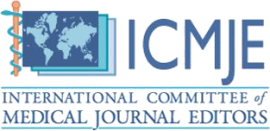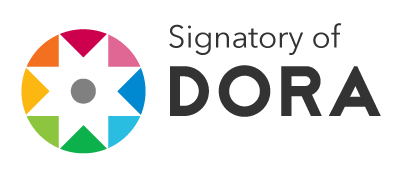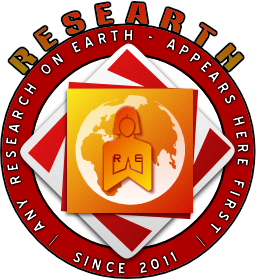Communication Norms in NGOs Advocating Reproductive Health: A Comparative Study of Malaysian and Nigerian NGOs
DOI:
https://doi.org/10.51611/iars.irj.v10i1.2020.114Keywords:
NGO, Communication Norms, Reproductive Health, Malaysia, NigeriaAbstract
Reproductive health is an emerging issue in developing countries. The United Nations Population Fund (UNFPA) reports that every minute, a woman in the developing world dies from treatable complications of either pregnancy or childbirth. Nigeria is a country where the state of reproductive health of its population is dismal. In 2012, UNFPA pointed out that Nigeria has one of the worst maternal mortality statistics in the world with a maternal mortality ratio of 545 per 100,000 live births. Several NGOs around the world deliver services at various levels to advocate the right of mothers to have safe births as well as address the shortage of skilled midwives. In this context, Malaysia has done much to control its infant and maternal mortality rates, through its community reproductive health initiatives. This study then aims to determine the communication norms in two NGOs, one in Malaysian and the other in Nigeria. The analysis was of projects undertaken by two NGOs, the Federation of Reproductive Health Association of Malaysia (FRHAM) and the Association for Reproductive and Family Health (ARFH) of Nigeria. The communication norms and ways of getting the community involved in their projects were examined through progress reports, document review and web searches. Besides being interviewed, questionnaires were filled by the employees of the NGOs. The findings indicate that the Nigerian and Malaysian NGOs have different communication models and they can learn from each other’s best practices.
Downloads
References
2. Amin, M. R. (2009). A Documentary Report on NGOs in Bangladesh: The Case Study of UDDJPAN. Dhaka: Department of Public Administration University of Dhaka.
3. ARFH. (2014). Introduction of ARFH. Retrieved 12 January, 2018, from http://arfh-ng.org/about.php
4. Benowitz, E.A. (2001). Principles of Management. New York: Hungry Minds, Inc.
5. Budden, M.C. (2010). Developing Crisis Management Skills Through A Realistic Case Scenario.
6. Burger, R., (2012). Reconsidering the Case for Enhancing Accountability Via Regulation. VOLUNTAS: International Journal of Voluntary and Nonprofit Organizations, 23(1), 85-108. doi: 10.1007/s11266-011-9238-9
7. Candland C., (2001) Institutional Impediments to Human Development in Pakistan. In: Shastri A., Wilson A.J. (eds) The Post-Colonial States of South Asia. Palgrave Macmillan, New York
8. Edwards, M. (1994). NGOs in the age of information. IDS Bulletin, 25(2), 117-125.
9. Frank, F & Smith, A. (1999). The community development handbook : a tool to build community capacity. Human Resources Development Canada, Hull, Quebec
10. FRHAM. (2018). Introduction of FRHAM. Retrieved March 26, 2018, from http://www.frham.org.my/
11. Goldberger, J.R. (2008). Non-governmental organizations, strategic bridge building, and the ‘‘Scientization’’ of Organic Agriculture in Kenya. Agriculture and Human Values, 25(2008), 271-289.
12. Hilhorst, D. (2003). The Real World of NGOs. Discources, Diversity, and Development. London: Zed Books Ltd.
13. Keith, G. (2005). The Sociology of Work (3rd ed.). Cambridge UK: Polity Press.
14. Keohane, R. O. (2002). Power and Governance in a Partially Globalized World London: Routledge.
15. Komito, L. (2007). Community and Inclusion: The Impact of New Communications Technologies. Irish Journal of Sociology. 16. 10.1177/079160350701600205.
16. Kumar, N. 2002. The challenges of community participation in forest development in Nepal (English). Operations Evaluation Department (OED) working paper series. Washington DC. World Bank.
17. Ladipo, O.A., & Delano, G. E. (2013). Annual Report (Vol. 01). Abuja ARFH.
18. Lim, H., & Chee, H. L., (1998). Nutritional status and reproductive health of Orang Asli women in two villages in Kuantan, Pahang. Malaysian journal of nutrition. 4. 31-54.
19. Manzo, K. (2003). Africa in the rise of rights-based development. Geoforum, 34(4), 437-456. doi: 10.1016/s0016-7185(03)00048-4
20. Mian, L. H., & Leng, C. H. (1998). Nutritional status and reproductive health of Orang Asli women in two villages in Kuantan, Pahang. Malaysian Journal of Nutrition, 4(4), 31 - 54.
21. Mike, N., (2003). US Foundationa Funding in Malaysia (Vol. 1). Melbourne: Institute of Public Affairs.
22. Musa, B. (2002). Malaysia: In the era of globalization. New York: Writers Club Press.
23. Nahan, M. (2003). US Foundational Funding in Malaysia (Vol. 1). Melbourne: Institute of Public Affairs.
24. Nalini, K. (2002). The Challenges of Community Participation in Forest Development in Nepal. Washington, D.C: The World Bank.
25. Navaratnam, R. V., (2003). Malaysia's Economic Challenges: A Critical Analysis of the Malaysian Economy Governance and Society. London: Asean Academic Press Ltd.
26. Nel, E., Binns, T., & Bek, D. (2007). 'Alternative foods' and community-based development: Rooibos tea production in South Africa's West Coast Mountains. Applied Geography, 27(2), 112-129. https://doi.org/10.1016/j.apgeog.2006.11.001
27. News, IRIN. (2006). ‘South Africa: Government adopts more focused approach to help orphans’,, IRIN. Retrieved from www.irinnews.org/report.asp?ReportID=51835S
28. NFD. (2014). Directory of NGOs Nigeria. Retrieved 12 January 2014, from http://web.nnngo.org/membership/mlist.htm
29. Nour, A. (2011). Challenges and Advantages of Community Participation as an Approach for Sustainable Urban Development in Egypt. Journal of Sustainable Development, 4(1), 79-91.
30. Nunnenkamp, P. & Weingarth, J. & Weisser, J. (2009). Is NGO Aid Not So Different After All? Comparing the Allocation of Swiss Aid by Private and Official Donors. European Journal of Political Economy. 25. 422-438. 10.1016/j.ejpoleco.2009.01.001.
31. Paul, H., & Ilona, V. (2010). Community Development and Civil Society; Making connection in the European Context. Portland: The Policy Press.
32. Rahman, A.R & Ibrahim, M. & Salleh, H. & Ismail, S. & Ali, S. & Manan, W. & Ishak, M. & Ahmad, A. (2011). Knowledge of Sexual and Reproductive Health among Adolescents Attending School in Kelantan, Malaysia. The Southeast Asian journal of tropical Medicine and Public Health. 42. 717-25
33. Roni, S., (2009). Community Anti-Poverty Strategies: A Conceptual Framework for a Critical Discussion. British Journal of Social Work, 39, 1063-1081.
34. Rosenberg, A. & Hartwig, K. & Merson, M. (2008). Government-NGO collaboration and sustainability of orphans and vulnerable children projects in southern Africa. Evaluation and program planning. 31. 51-60. 10.1016/j.evalprogplan.2007.08.005.
35. Rule, A. & Kyle, P. (2009). Community-Building in a Diverse Setting. Early Childhood Education Journal. 36. 291-295. 10.1007/s10643-008-0290-z.
36. Ruth, P. (2006). The Role of Nonprofit Advocacy Organizations in Australian Democracy and Policy Governance International Journal of Voluntary and Nonprofit Organizations, 17(01), 59-75.
37. Salim, L. & Sadruddin, S. & Zakus, D. (2012). Organizational Commitment in a Health NGO in Pakistan. VOLUNTAS: International Journal of Voluntary and Nonprofit Organizations. 23. 10.1007/s11266-011-9209-1
38. Saw, S.H, & Kesavapany, K. (2006). Malaysia Recent Trends and Challenges. Singapore: Institute of Southeast Asian Studies.
39. Schak, D. C., & Hudson, C. (2003). Civil society in Asia. In D. C. Schak, & W. Hudson (Eds.), Civil society in Asia (1 ed., pp. 1-8). Ashgate Publishing Limited.
40. Scholes, E. (1998). Gowere Handbook of Internal Communication. Hampshire England Gower Publishing Limited.
41. Smith, F., and Anne. (1999). The Community Development Handbook a tool to build Community Capacity Alberta: Learning and Development Canada.
42. State, U.S.D., (2006). Country reports on human rights practices 2005. Washington DC: US Department of State.
43. Tanova, C., & Nadiri, H. (2010). The role of cultural context in direct communication. Baltic Journal of Management, 5(2), 185-196.
44. Terri, S., & Jennifer, N. G., (2006). Effect of communication mode in justice-based service recovery. Managing Service Quality, 16(2), 124-144.
45. UNFPA. (2013). Reproductive Health Problems in Nigeria. Retrieved 26 December 2013, from http://nigeria.unfpa.org/reproductivehealth.html
46. Vidhu, V. (2002). Malaysia State and Civil Society in Transition. London Lynne Rienner Publishers, Inc.
47. Yadav, S. (2018). Growing Human Population and Sustainable Development. IARS’ International Research Journal, 8(1). Retrieved from https://researth.iars.info/index.php/curie/article/view/87
48. Shukla, B., & Kaur, D. (2013). A quasi-experimental study to assess the effectiveness of structured teaching programme on knowledge regarding prevention of STDs among women in the selected rural areas, Hoshiarpur, Punjab – India. IARS’ International Research Journal, 3(2). Retrieved from https://researth.iars.info/index.php/curie/article/view/30
49. Eynul-din, H. K., Ahmadi, A., & Ahmadi, S. (2015). Social and Economic Sustainability Analysis of Rural Settlements Located in the Hazard-Prone Areas: Case Study: Villages Surrounding the City of Sanandaj. IARS’ International Research Journal, 5(2). Retrieved from https://researth.iars.info/index.php/curie/article/view/52
Downloads
Published
Issue
Section
License
Copyright (c) 2020 Mumtaz Ali, Maya Khemlani David, Angela Rumina Leo

This work is licensed under a Creative Commons Attribution 4.0 International License.
Author(s) hold complete right on the content of this article. Copyright to the content are governed as per Copyright Policy of the Journal.





















